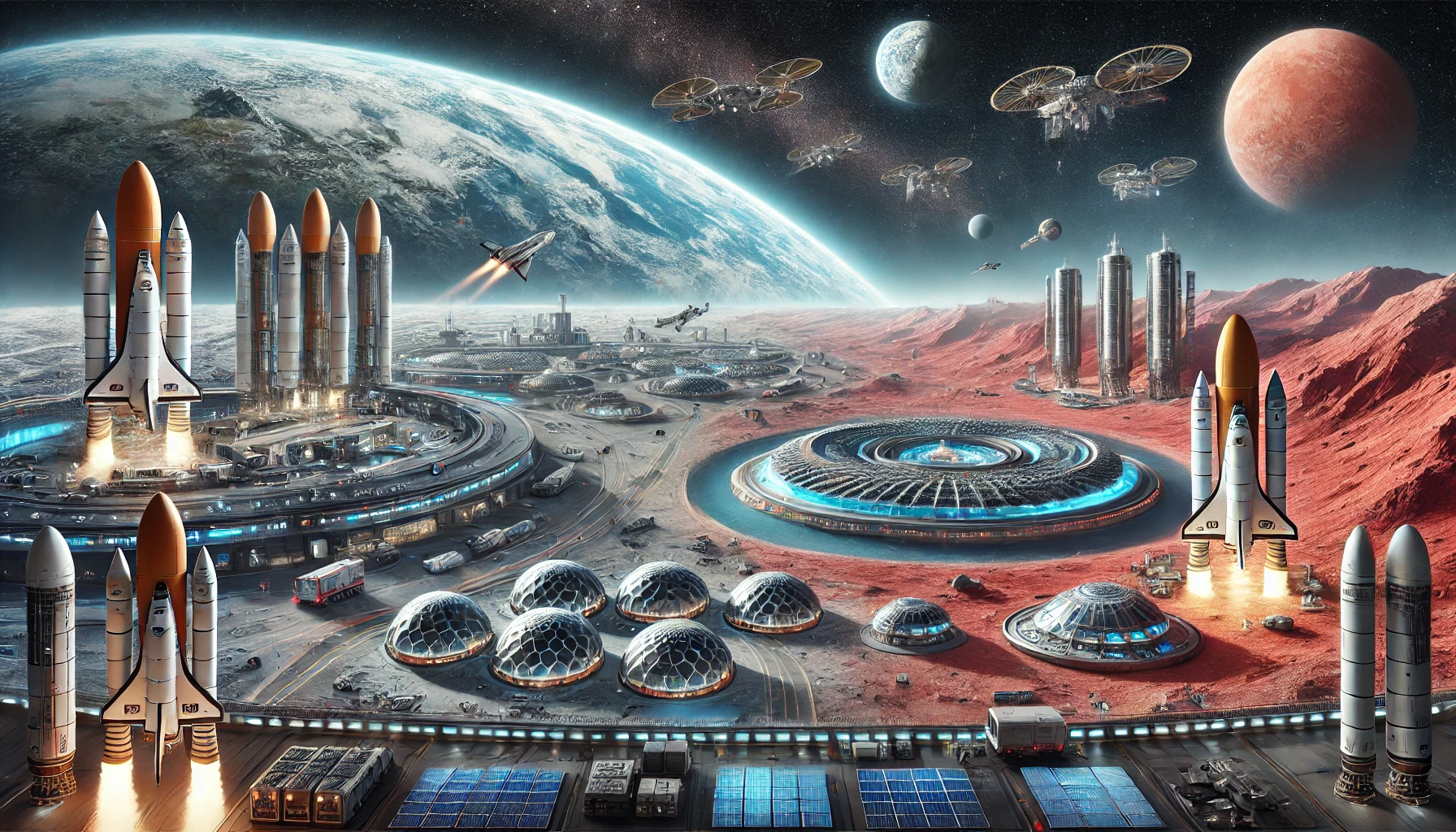From Spaceports to Marsports: How the Future of Space Travel is Being Built

Welcome to the Age of Spaceports
Space travel is no longer just the stuff of science fiction. Spaceports—once a concept reserved for movies with flying cars—are becoming a reality. These are not your average airports. Imagine waiting for a flight, but instead of sipping on an overpriced coffee, you're watching a rocket fuel up for a trip to the moon. Spaceports are popping up across the globe, with some already operational and others in the planning stages. These facilities are designed to support not just government-sponsored missions, but commercial space travel, too. Companies like SpaceX and Blue Origin are already using them to send cargo, satellites, and, occasionally, a billionaire or two into orbit. As space tourism takes off (pun intended), the need for these intergalactic hubs is growing rapidly.
Lunar Bases: The Moon's New Real Estate
Think of the moon as the new beachfront property, only with fewer oceans and more craters. Lunar bases are being developed as a stepping stone for humanity's future travels. Why the moon, you ask? It's the perfect layover spot between Earth and Mars, and it has valuable resources like water ice, which could be mined and converted into fuel. NASA's Artemis program aims to establish a sustainable presence on the moon by the end of this decade. The goal is not just scientific exploration, but also building infrastructure for future missions to Mars. Lunar bases would serve as refueling stations and research hubs, helping us understand how to live in extreme environments. Just imagine the real estate ads: 'Luxury craters with a view of Earth, perfect for those looking to escape the hustle and bustle.'
Marsports: The Final Frontier
Now, let's talk about Mars. If spaceports are today's airports and lunar bases are tomorrow's gas stations, Marsports are the intergalactic equivalent of space terminals on steroids. Marsports would handle everything from incoming cargo to interplanetary travel logistics. We're talking about full-on spaceports on Mars, where rockets land, refuel, and take off again, transporting goods and people between planets. Companies like SpaceX are leading the charge with plans to establish a colony on Mars in the next few decades. But it's not just about building rockets. We're going to need cutting-edge technology to create habitats, food systems, and—let’s not forget—Wi-Fi. Because no one wants to live on Mars without being able to binge-watch their favorite Earth shows. Marsports would be the nerve center of Martian colonization, coordinating everything from resource allocation to travel schedules. Think of it as Grand Central Station, but in space, and with more spacesuits.
The Tech Behind Space Travel Infrastructure
Building spaceports and Marsports isn't just a matter of paving some lunar asphalt and hoping for the best. It requires a level of technology and collaboration that makes building the International Space Station look like child's play. First, you need rockets capable of traveling vast distances. Then there's the issue of energy: How do you power a facility on Mars, where there's no natural gas or solar panels aren't enough to keep the lights on during those long Martian nights? Enter nuclear power. Companies are already exploring compact nuclear reactors designed for space, which could provide the necessary energy for both lunar bases and Marsports. But that's just the start. We also need to think about food, air, and water—essentials for long-term survival. Scientists are researching how to grow food in space, purify air, and recycle water so that future Martians (yes, we’re calling them that) can thrive without constantly relying on resupply missions from Earth.
Global Collaboration and Commercial Space Travel
The future of space travel isn't just about NASA or SpaceX. It's going to take a global effort to make interplanetary travel a reality. Countries around the world are getting involved in space exploration, and the private sector is stepping up, too. Companies like Boeing, Lockheed Martin, and Blue Origin are all investing in the development of spaceports and other necessary infrastructure. And it's not just for astronauts and scientists. Space tourism is on the horizon, with companies like Virgin Galactic offering suborbital flights to the wealthy and adventurous. But for space travel to become mainstream, the infrastructure needs to be in place. That's where spaceports and Marsports come in. They represent the first step in making space accessible to everyone, not just those with deep pockets or a PhD in astrophysics. We might be a few decades away from interplanetary vacations, but the groundwork is being laid now.
What’s Next for Space Travel?
So, what’s next? The future of space travel depends on how quickly we can build the infrastructure to support it. Spaceports and Marsports are just the beginning. Once we establish permanent lunar bases and Martian colonies, we’ll need to think about transportation between planets, supply chains, and even space law (because someone has to regulate those alien parking tickets). And while the idea of living on Mars might seem far-fetched, it’s closer to reality than ever before. Thanks to advancements in technology and global collaboration, we're on the cusp of a new era in space exploration. The question isn't if we'll travel to Mars—it's when. And when that day comes, you might just find yourself standing in line at a Marsport, passport in hand, waiting for your flight to the Red Planet.
Would You Take a Trip to Mars?
As the infrastructure for space travel continues to develop, it begs the question: Would you hop on a rocket and take a trip to Mars? Or are you more of a 'I'll wait until they have a Starbucks on the moon' type of person? The future of space travel is exciting, but it’s not without its challenges. So, what do you think? Would you sign up for a one-way ticket to the stars?



